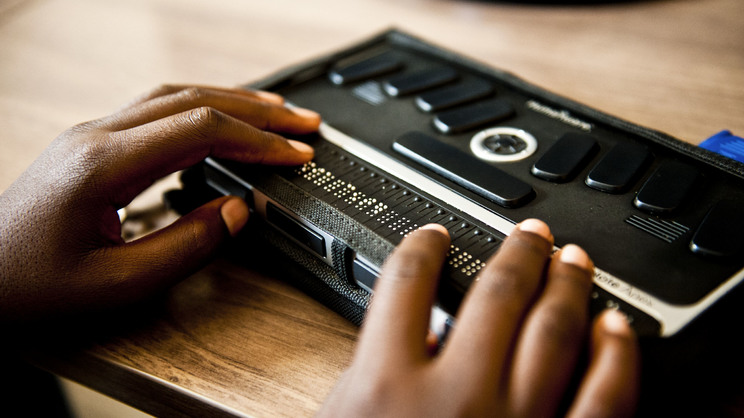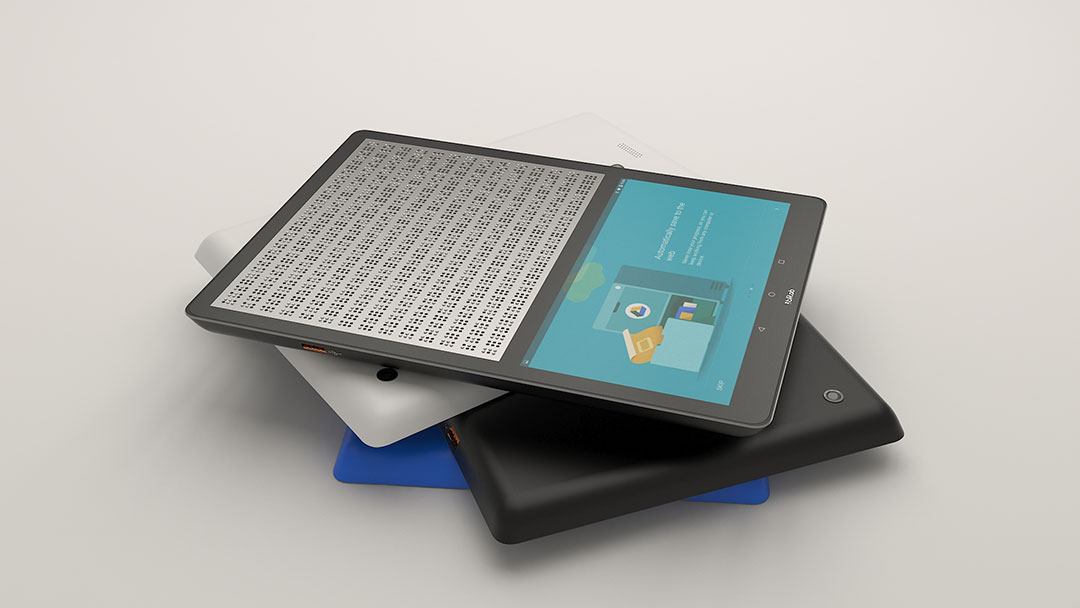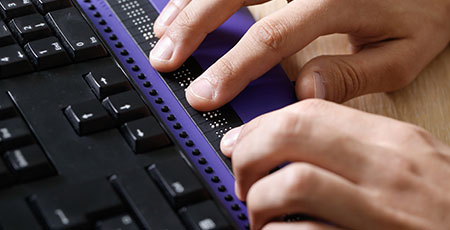Speech-to-Text Devices for Low Vision: Bridging the Communication Gap
Discover Innovative Tools Designed for the Aesthetically Damaged
The development of cutting-edge tools for the aesthetically impaired represents a considerable improvement in ease of access and independence. Technologies such as smart glasses with AI capacities and mobile applications developed to provide auditory descriptions are improving everyday experiences for users.
Smart Glasses for Navigation

Smart glasses created for navigation are revolutionizing the method aesthetically damaged individuals communicate with their environment. These innovative tools use a mix of video camera technology, artificial knowledge, and acoustic feedback to give real-time details concerning environments. By utilizing barrier detection systems, wise glasses can signal users to possible hazards, making it possible for much safer wheelchair in both familiar and strange setups.
The integration of GPS modern technology additionally improves navigating abilities, allowing customers to receive acoustic directions as they relocate. This hands-free technique not only promotes independence yet also empowers visually impaired individuals to navigate metropolitan landscapes with increased self-confidence. Additionally, lots of clever glasses are geared up with features that determine spots and road indications, supplying contextual info that boosts the user experience.
Furthermore, the advancement of these gadgets is constantly advancing, with business functioning to improve the accuracy of item acknowledgment and expand the array of navigational features. As smart glasses become more budget friendly and available, they hold the prospective to considerably transform daily life for aesthetically damaged customers. Ultimately, these ingenious tools stand for a crucial step towards inclusivity, offering boosted mobility and a better feeling of autonomy for people browsing the globe around them.

Mobile Apps for Daily Living
Exactly how can mobile applications boost the everyday lives of aesthetically impaired people? Mobile applications are revolutionizing the method aesthetically impaired individuals browse their settings, handle day-to-day tasks, and gain access to details. These applications offer vital support through different functionalities, promoting freedom and improving lifestyle.
Numerous innovative mobile apps are created especially for everyday living. For example, applications like Be My Eyes attach visually impaired users with sighted volunteers by means of video phone calls, enabling them to obtain real-time support with tasks such as checking out labels or navigating unknown areas. Seeing AI, established by Microsoft, uses synthetic intelligence to describe environments, reviewed text, and recognize items, successfully transforming a smartphone right into a powerful device for everyday aid.
In addition, navigating apps tailored for the aesthetically damaged, such as Aira and BlindSquare, provide audio-based directions and environmental info, allowing users to traverse their environments securely and confidently. Beyond navigating and instant support, mobile applications additionally support organization and job administration, with features that aid users establish reminders, develop order of business, and track consultations. In summary, mobile applications function as crucial resources, encouraging visually damaged people to lead even more independent and satisfying lives.
Wearable Technologies for Support
Empowerment via innovation is increasingly obvious in the realm of wearable tools created to assist aesthetically damaged individuals. These innovative devices incorporate effortlessly right into daily life, improving navigating and supplying crucial feedback to individuals. Smart glasses geared up with electronic cameras can recognize faces and check out text out loud, permitting users to communicate even more confidently in expert and social setups.
An additional notable development is using haptic feedback systems in wearable gadgets. These systems use resonances or visit their website various other responsive signals to share info regarding the customer's environment, such as challenges or adjustments in terrain, boosting mobility and safety. Wearable innovations additionally consist of wristbands that attach to smartphones, notifying individuals to notices through refined resonances, therefore improving connection without dependence on aesthetic hints.
As these innovations remain to advance, they are not just boosting independence for visually impaired people yet likewise cultivating a greater feeling of incorporation in culture. By bridging the gap between challenges encountered in day-to-day living and the possibility for autonomy, wearable technologies serve as crucial devices in the quest for equality and empowerment for those with aesthetic problems.
Sound Description Tools
Sound description devices play an essential function in enhancing access for aesthetically impaired people, supplying them with the capability to involve with aesthetic media. Assistive technology for the blind. These tools provide narrated descriptions of essential visual elements in films, television shows, and live performances, making certain that individuals can completely understand the context and feelings shared via visuals
Audio description can be incorporated right into numerous platforms, consisting of streaming solutions, movie theater testings, and live theater. Lots of preferred streaming services currently include audio description as an access feature, permitting visitors to pick it quickly. In addition to conventional media, specialized apps additionally exist, supplying audio descriptions for art exhibitions, museums, and other social events.
The efficiency of audio description pivots on the skill of the storytellers, that must communicate aesthetic details succinctly without interfering with the initial audio. Developments in this area are additionally leading the way for more tailored experiences, where customers can change the level of detail and pacing according to their preferences.
Braille Innovations and Devices
Braille devices and advancements have actually dramatically changed the way visually damaged people interact with text and information. Modern advancements have resulted in the growth of functional tools that boost literacy and independence amongst individuals. Especially, Braille present technologies have evolved, permitting dynamic reading experiences. These devices transform digital message right into Braille, enabling users to access a large array of details on computers, smartphones, and tablet computers.
Furthermore, portable Braille notetakers integrate standard Braille input with modern performances, assisting in note-taking, organizing, and document editing and enhancing on the move. AI-powered visual aids. These compact tools usually include text-to-speech capabilities, linking the gap between Braille and auditory information
On top of that, ingenious Braille printers have emerged, permitting users to generate Braille labels, records, and educational products effectively. This availability cultivates better engagement in specialist and instructional best prescription sunglasses settings, inevitably promoting inclusivity.
In addition, research into smart Braille innovations continues to increase. Devices that integrate fabricated knowledge are being checked out to provide real-time navigating assistance and contextual details, improving the individual experience in diverse settings. On the whole, these developments reflect a dedication to equipping aesthetically damaged individuals through technology, guaranteeing they can conveniently gain access to and engage with the globe around them.

Final Thought
The development of ingenious devices for the visually impaired dramatically boosts self-reliance and lifestyle. Smart glasses, mobile applications, wearable technologies, audio summary tools, and Braille developments jointly equip individuals by offering essential navigating help, ecological recognition, and enhanced analysis experiences. These innovations not only foster better inclusion yet also advertise freedom in daily tasks, ultimately adding to a much more accessible and equitable culture for visually impaired individuals. Continued advancement in this area holds pledge for further improvements.
As wise glasses come to be much more accessible and budget-friendly, they hold the prospective to substantially change daily life for visually impaired customers. Mobile applications are transforming the way aesthetically damaged description users navigate their environments, handle daily jobs, and gain access to details. Applications like Be My Eyes link aesthetically damaged users with sighted volunteers through video clip phone calls, enabling them to receive real-time aid with jobs such as reading labels or navigating strange areas.In addition, navigating apps tailored for the visually damaged, such as Aira and BlindSquare, supply audio-based instructions and ecological details, enabling users to traverse their surroundings securely and confidently.The improvement of innovative devices for the aesthetically impaired dramatically enhances freedom and high quality of life.